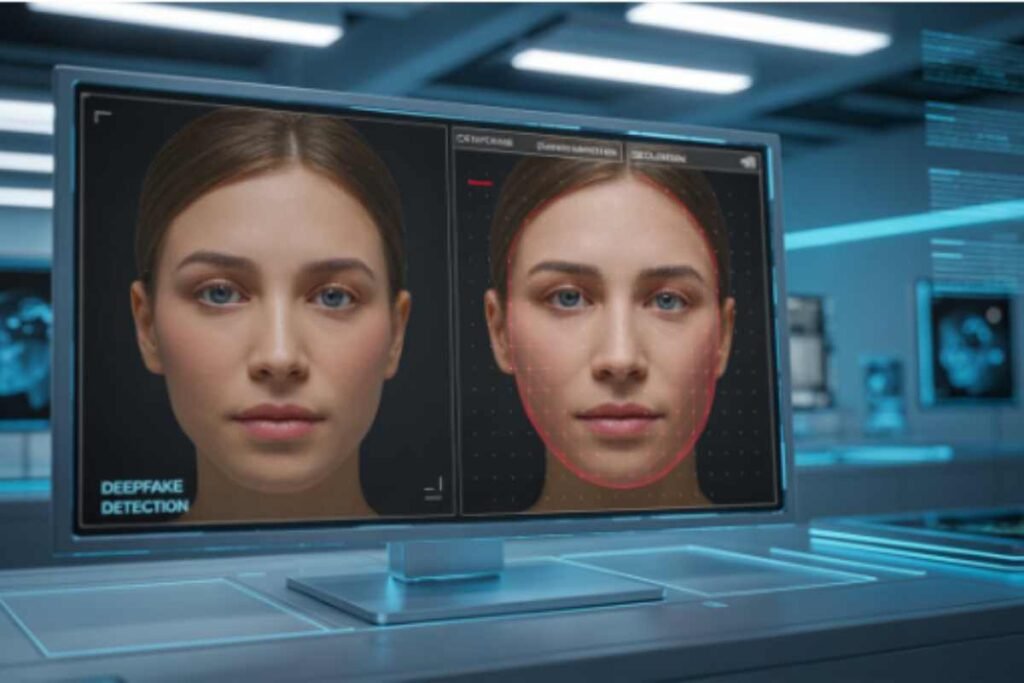Deepfake technology has become one of the most controversial and strong innovations of recent years. There is a new form of artificial intelligence (AI) content that has drawn attention around the world: deepfake. Deepfakes are realistic-looking videos or images in which the image of a person has been manipulated using AI. Deepfake detection technology has proved to be a vital tool in maintaining truth and trust in the digital media as deepfakes become increasingly sophisticated.
What are Deepfakes?
In its essence, the deepfake technology employs the combination of artificial intelligence and machine learning to make media content look hyper-realistic through face swapping, changing voice, or producing a completely synthetic scene. This technology is also highly dependent on Generative Adversarial Networks (GANs) in which two neural networks are pitted against each other: a generator network that generates fake content and a discriminator network that attempts to identify the fakes. This leads to more and more persuasive deepfakes with time.
Deepfakes can be used innocently (inserting an actor into a movie, for instance), or to more disturbing purposes (fake news, political deception, identity theft, and fraud).
What Is the Significance of Deepfake Detection?
Deepfakes are a significant problem. False video contents may destroy social tranquility, reputation, and trust in the society. Even worse, deepfakes have been used by criminals and bad actors to perform scams, manipulate elections and propagate disinformation.
This is why it is important to create strong tools of detecting deepfake. The ability to detect manipulated media enables platforms, governments and users to ensure authenticity, reduce risk and uphold information integrity.
What is the Deepfake Detection Technology?
Deepfake detection is a group of techniques that can check videos, pictures, or audio and identify whether they were tampered with or not. These approaches can be divided in general into:
Visual Analysis
Artifact Detection: Early deepfake videos were also likely to include visual artifacts or anomalies, such as unnatural blinking or unnatural shadows, or uncoordinated facial movements. These subtle clues are detected by detection algorithms.
Physiology Detection: Others use eyes tracking patterns, facial micro expressions, or inaccuracies in lip syncing.
Image Forensics: Techniques review pixel level anomalies or compressions patterns that would possibly show tampering.
Audio Analysis
Fake voice recordings are usually created using deepfake audio (also known as synthetic speech). Detection techniques study:
- Consistency of tone and pitch of the voice,
- Patterns and cadence of the speech,
- Anomalies of background noise.
Behavioral Analysis
There are some sophisticated detection systems that interpret the context and behavior of videos:
- Unnatural gestures,
- Incoherent interactions,
- Abnormalities in the background or lighting changes.
Detectors based on Machine Learning
Deep learning is a technique of modern deepfake countering: training neural networks with enormous amounts of real and fake data. Such models train to identify minute differences that human beings may not detect.
Convolutional Neural Networks (CNNs): They are good at learning the spatial patterns in images and videos.
Recurrent Neural Networks (RNNs): They are beneficial in time analysis between the frames.
Hybrid models which are mixtures of various models are more accurate.
Difficulties with Deepfake Detection
Deepfake detection is a game of chasing cats. The technology of deepfake generation develops as the detection technology does. These are some of the challenges:
Increasing Realism: Newer deepfakes are more realistic, with less artifacts that could be detected previously.
Small Data: Detection models need extensive datasets of various deepfakes to train, and these are hard to gather.
Real-time Detection: Detection that is fast and accurate in streaming platforms or social media requires a lot of resources.
Generalization: Detection models lack the ability to deal with deepfakes produced using novel or unseen techniques.
New Trends and Resolutions?
Verification and Blockchain
Others involve integrating liveness detection with blockchain in order to authenticate media at the source. Videos can also be cryptographically signed and thus users are able to verify the origin of videos.
Multi Modal Detection
Integrating visual, audio, and contextual information, detection systems are more accurate and have fewer false positives.
Collaborative Efforts
To fight malicious deepfakes, tech companies, governments, and research organizations are working together to develop open-source tools, exchange datasets and develop standards.
Future of Deepfake Detection Technology
Deepfake technology is only going to increase, and deepfake detection will, therefore, be a constant requirement. As AI develops, detection systems will have to transform dynamically, acquiring new methods and cooperation between industries.
Digital literacy and public awareness are also essential- users should become critical of suspicious media and become knowledgeable about the potential of deepfakes.
With the momentum gained by ethical development in AI, it is hoped that deepfake technology can be put to good use rather than evil-empowering creativity without undermining truth.
Conclusion
Deepfakes are a very exciting combination of imagination and artificial intelligence capabilities, as well as a real problem in the era of digitalization. The cat-and-mouse game between the deepfake creation and detection is still defining the nature of online media. The most effective countermeasure to the misinformation, fraud, and abuse caused by manipulated media are powerful deepfake detection technologies. We can work to uphold trust and authenticity in the virtual world by uniting the latest AI, forensic investigation and community watch.


